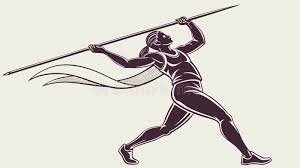
elon musk ai robot
Who Is Elon Musk and Why His AI Robot Matters
Elon Musk, the visionary entrepreneur behind Tesla, SpaceX, and Neuralink, is now turning his attention to artificial intelligence robots. With the rapid advancement in AI and robotics, Musk aims to integrate cutting-edge technology into a humanoid robot that can help reshape industries and everyday life.
Musk announced this project under Tesla AI Day, revealing what’s now known as the Tesla Bot, or by its official name: Optimus. Designed to perform dangerous, repetitive, or boring tasks, this robot is being positioned as a major step toward an automated future where robots and humans work side by side.
What Is Tesla Optimus (Elon Musk’s AI Robot)?
The Tesla Optimus robot is a humanoid AI robot currently being developed by Tesla. First introduced in 2021, Optimus is built to carry out general-purpose tasks and assist humans in their daily lives and workplaces. What makes it unique is that it combines Tesla’s existing expertise in autonomous driving, AI, and mechanical engineering.
Key Specs and Features (Prototype Phase):
- Height: 5’8″ (173 cm)
- Weight: 125 lbs (56 kg)
- Payload capacity: 45 lbs (20 kg)
- Walking speed: 5 mph (8 km/h)
- Human-like hands with 5 fingers
- Powered by Tesla’s Full Self-Driving AI (FSD)
- 40 actuators for smooth, human-like motion
- Integrated neural networks and Dojo supercomputer training
According to Musk, Optimus is intended to be “friendly, and navigate a world built for humans.”
The Purpose of Musk’s AI Robot
The Tesla Optimus robot is being designed for a wide range of real-world tasks. Musk’s vision includes:
- Helping in factories with parts delivery and machine operations
- Assisting elderly or disabled individuals at home
- Taking over dangerous or repetitive tasks in warehouses
- Acting as a mobile interface between humans and the Tesla ecosystem
- Supporting tasks in space missions and Mars colonization (long-term vision)
Unlike most industrial robots, Optimus is intended to operate in human environments and work collaboratively with people, rather than replace them.
How Is It Powered by Artificial Intelligence?
Tesla Optimus is built on the same AI infrastructure used in Tesla’s Autopilot and Full Self-Driving (FSD) systems. This includes:
- Real-time decision making
- Object recognition and spatial awareness
- Advanced sensor fusion (visual, auditory, and tactile)
- Continuous learning through data and simulation
The robot also benefits from Tesla’s Dojo supercomputer, which trains neural networks at high speed, making it smarter over time.
🔗 Tesla AI and Dojo – Official Tesla Page
This is what sets Musk’s robot apart from simple programmable machines: it learns, adapts, and responds intelligently to new environments.
What Stage Is the Robot in Right Now?
As of mid-2025, the Tesla Optimus robot is still in prototype development. However, significant progress has been made:
- In 2022, Tesla unveiled a working prototype that walked unassisted
- In 2023, a more advanced version showed mobility, object manipulation, and human-like hand movements
- In 2024, Tesla released video demos of Optimus sorting objects, folding clothes, and walking with greater stability
Musk has claimed that the robot could enter limited production by 2025 or 2026, starting with in-house use at Tesla factories.
Applications of the Elon Musk AI Robot
In Manufacturing and Industry:
Optimus could handle assembly-line tasks, quality control, and material transport, helping companies reduce labor costs and increase efficiency.
In Home Assistance:
It can act as a companion for elderly people, assist with household chores, and provide mobility support.
In Healthcare:
Robots like Optimus could be trained to assist nurses and caregivers, providing non-critical support in medical facilities.
In Space Exploration:
Musk’s long-term goal is to use such robots in Mars missions and other planetary exploration, where sending humans is risky and costly.
How Does It Compare with Other Robots?
There are many companies building humanoid robots — like Boston Dynamics, Agility Robotics, and Figure AI — but Elon Musk’s Tesla Optimus is unique because it focuses on:
- Human-level AI understanding
- Integration with existing Tesla ecosystem (cars, energy, robotics)
- Massive scalability through Tesla’s manufacturing capabilities
- A relatively low estimated cost (Musk has suggested under $20,000 in the future)
🔗 Tesla Bot Announcement – Tesla AI Day 2021 (YouTube)
This makes it potentially more accessible and versatile than robots currently available for industrial use only.
Challenges and Concerns
Despite its potential, there are several technical and ethical challenges to Elon Musk’s AI robot:
- Ensuring safety around humans
- Handling real-world unpredictability
- Preventing AI misuse or hacking
- Legal and labor implications of replacing workers
- Battery life and charging limitations
Musk has stated multiple times that AI safety is crucial, and he’s also co-founded xAI, a separate company focused on safe artificial general intelligence.
Public Reaction and Criticism
Reactions to the Tesla Bot have been mixed:
- Supporters see it as a groundbreaking step toward automated living
- Critics argue that it’s too ambitious, and Tesla should focus on delivering its existing promises like FSD and Cybertruck
- Others worry about job loss, privacy, and AI ethics
Regardless of the opinions, the launch of Optimus has sparked new conversations about what role robots will play in our daily lives.
Conclusion: Is Elon Musk’s AI Robot the Future?
The Tesla Optimus robot is not just a tech demo — it represents Elon Musk’s belief that artificial intelligence and robotics will define the future of civilization. By combining AI, robotics, and Tesla’s unique manufacturing capabilities, Optimus could one day become a household assistant, factory worker, or even a space explorer.
While there are still many technical hurdles to overcome, the pace of development shows that humanoid robots powered by AI are no longer science fiction — they are very real, and they are coming.






